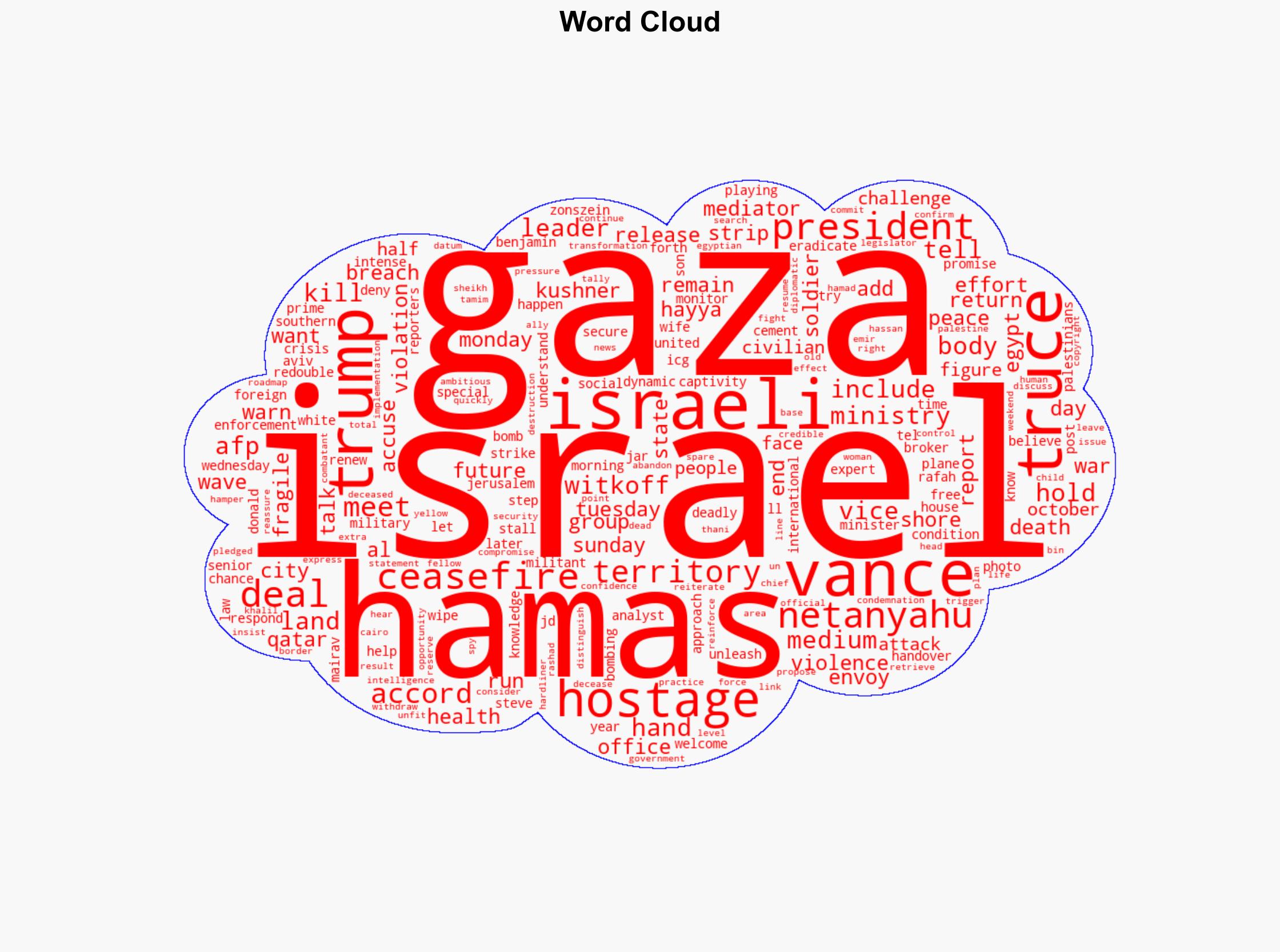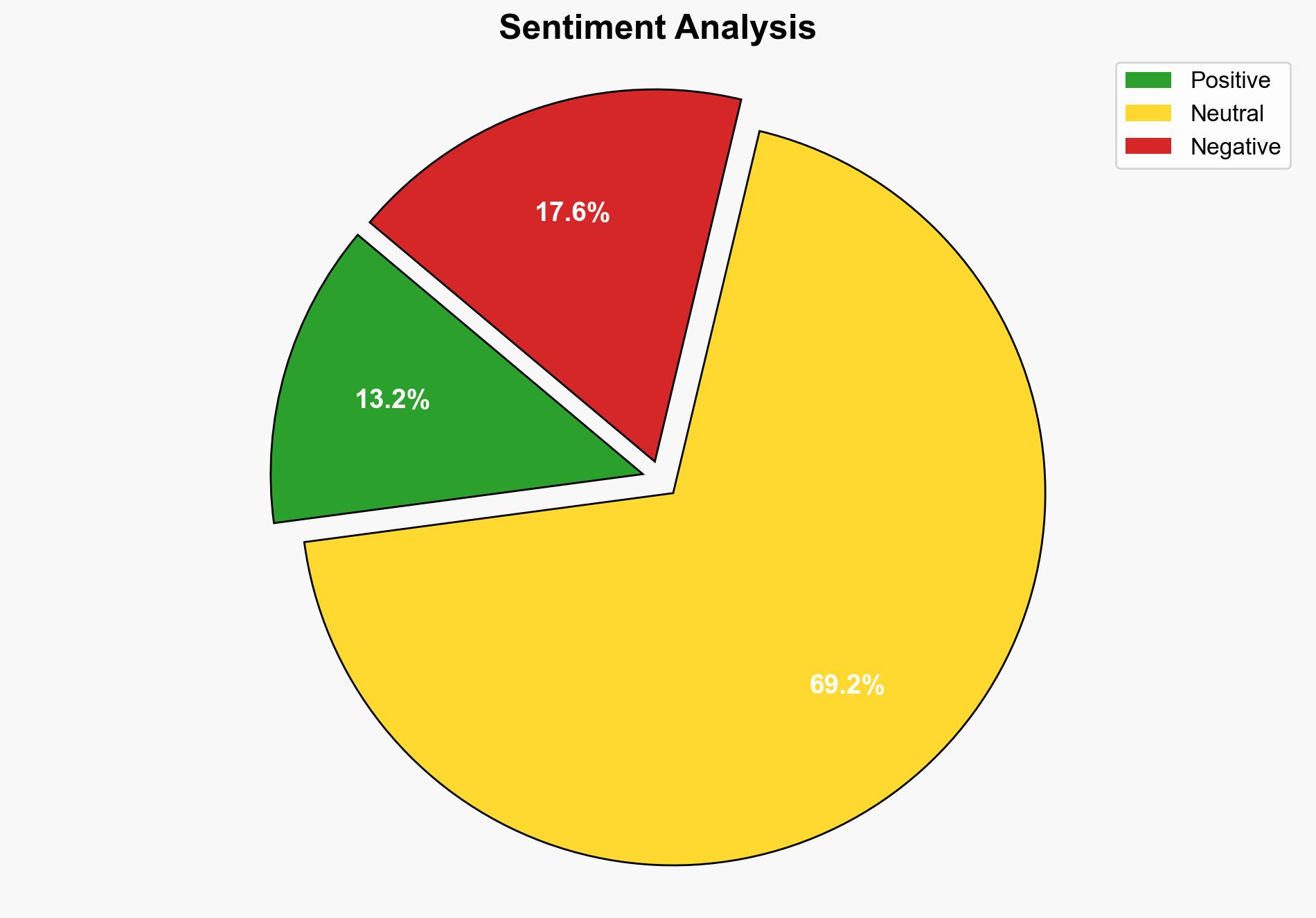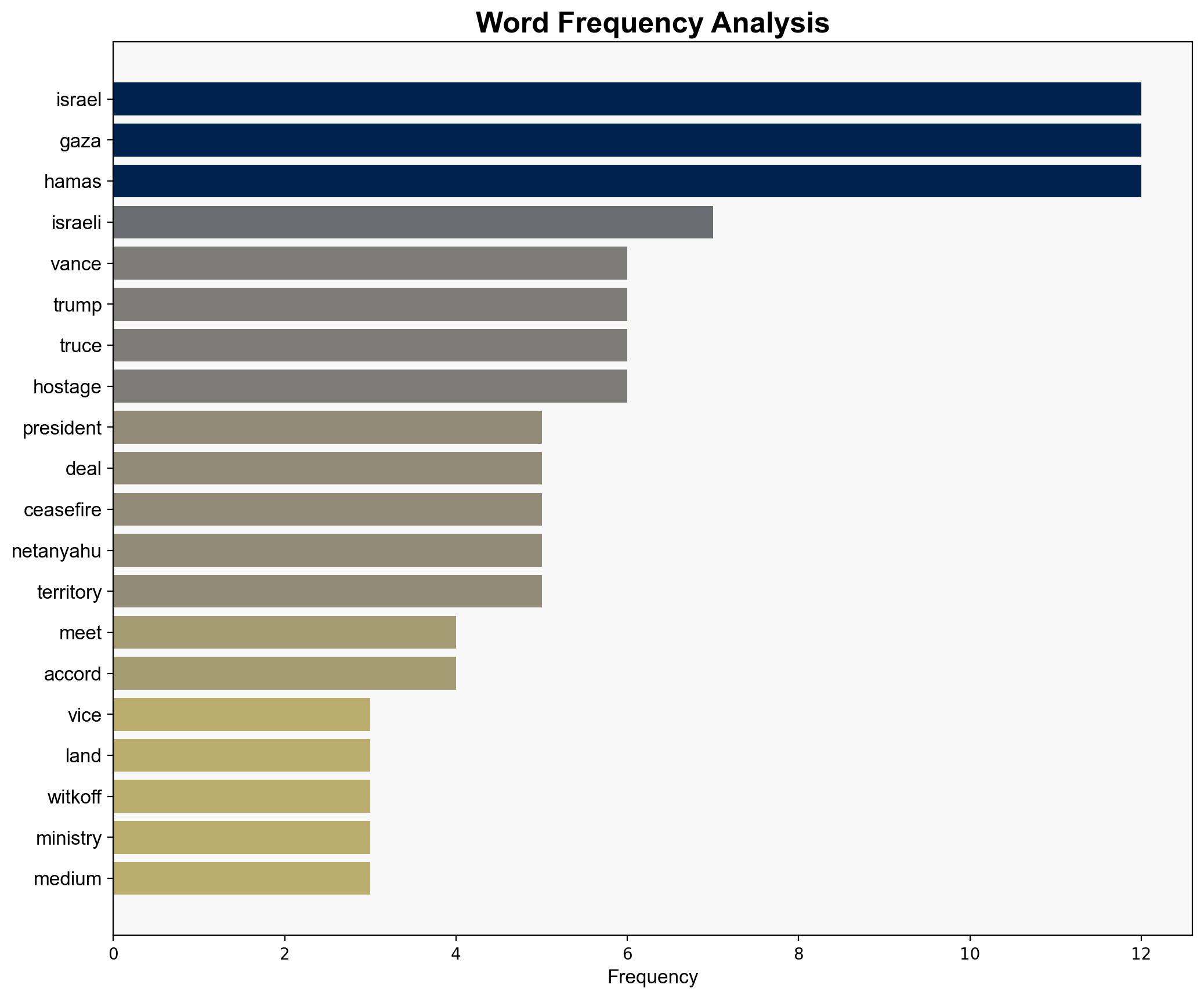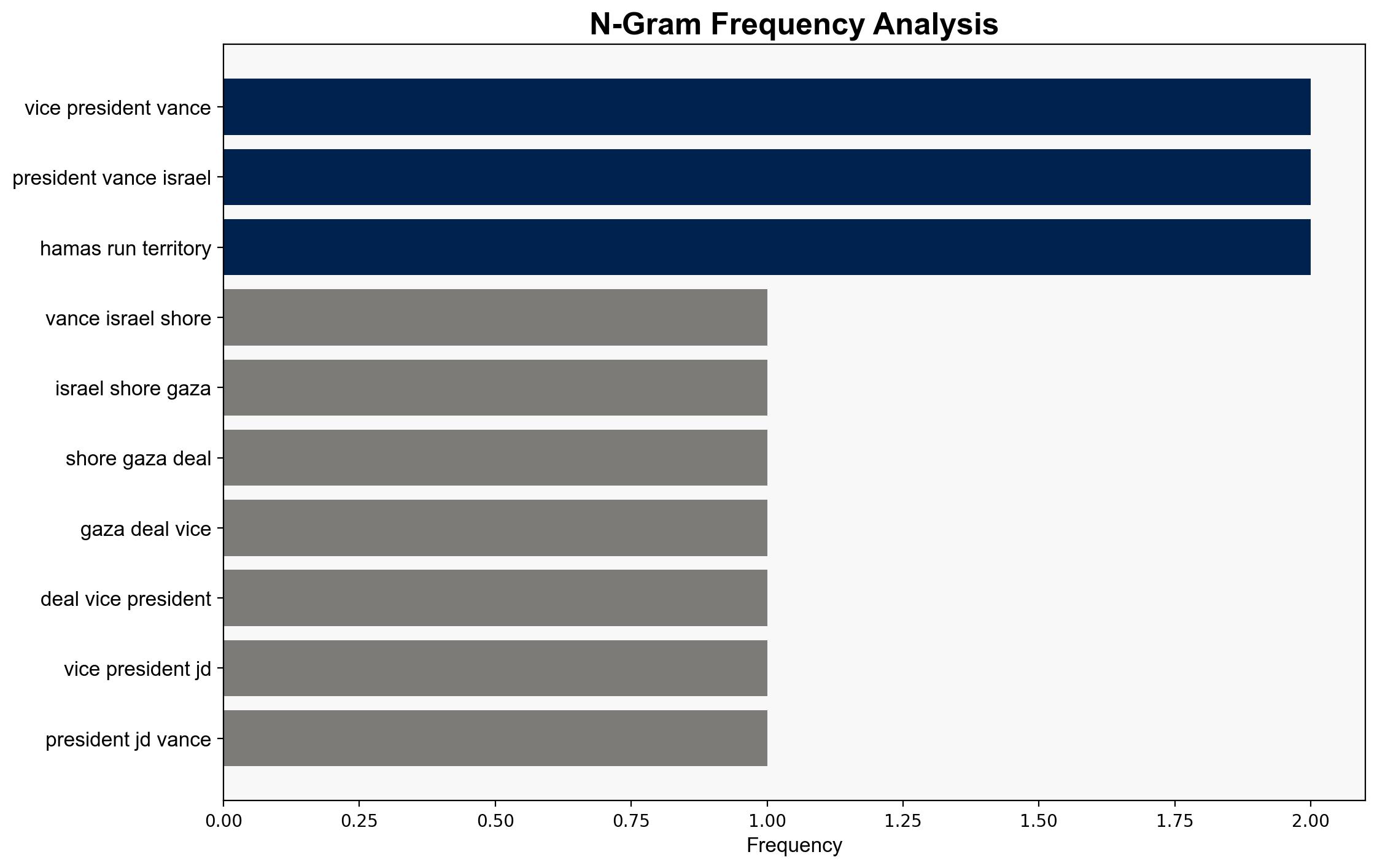US Vice President Vance In Israel To Shore Up Gaza Deal – International Business Times
Published on: 2025-10-21
Intelligence Report: US Vice President Vance In Israel To Shore Up Gaza Deal – International Business Times
1. BLUF (Bottom Line Up Front)
The most supported hypothesis is that the US, under Vice President Vance’s visit, aims to stabilize the fragile Gaza ceasefire to prevent further escalation and maintain regional stability. Confidence level: Moderate. Recommended action: Continue diplomatic engagement with both Israeli and Palestinian entities while preparing contingency plans for potential ceasefire breaches.
2. Competing Hypotheses
1. **Hypothesis 1**: The US visit aims to reinforce the Gaza ceasefire, ensuring regional stability and preventing further violence. This is supported by the presence of key figures like Jared Kushner and Steve Witkoff, and the emphasis on diplomatic meetings with Israeli leaders.
2. **Hypothesis 2**: The visit is primarily a strategic maneuver to bolster US influence in the region, using the ceasefire as a platform to assert diplomatic dominance and potentially leverage against Iran’s influence through Hamas. This is suggested by the involvement of multiple international mediators and the geopolitical context.
3. Key Assumptions and Red Flags
– **Assumptions**: The ceasefire is fragile but can be stabilized through diplomatic efforts. Hamas and Israel are willing to adhere to the terms under international pressure.
– **Red Flags**: Recent violence and accusations between Israel and Hamas indicate underlying tensions. The involvement of multiple mediators could complicate negotiations.
– **Blind Spots**: The internal political dynamics within Hamas and Israel’s government could impact the ceasefire’s sustainability.
4. Implications and Strategic Risks
– **Implications**: A stable ceasefire could lead to improved humanitarian conditions in Gaza and reduce regional tensions. Conversely, a breakdown could escalate into broader conflict, impacting US interests and allies.
– **Strategic Risks**: Potential escalation if ceasefire breaches occur, leading to military retaliation. Increased influence of external actors like Iran or Qatar could shift regional power dynamics.
5. Recommendations and Outlook
- Enhance intelligence sharing with regional allies to monitor ceasefire adherence.
- Prepare diplomatic initiatives to address potential breaches swiftly.
- Scenario Projections:
- Best: Ceasefire holds, leading to long-term peace negotiations.
- Worst: Ceasefire collapses, resulting in widespread conflict.
- Most Likely: Periodic breaches occur, but ceasefire remains largely intact with international mediation.
6. Key Individuals and Entities
– Vice President Vance
– Donald Trump
– Jared Kushner
– Steve Witkoff
– Benjamin Netanyahu
– Khalil al-Hayya
– Hassan Rashad
– Sheikh Tamim bin Hamad al-Thani
7. Thematic Tags
national security threats, regional stability, diplomatic engagement, Middle East peace process




